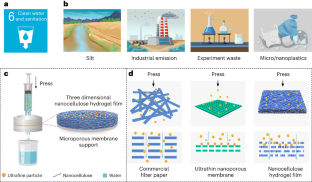2024-01-22 パデュー大学
◆AIモデルは低コストで持続可能な材料から作られ、デジタルツインのデザインに革新的な進展をもたらします。研究者は将来的には実際の木から3Dジオメトリデータをコンピュータ内で再構築することを目指しています。
<関連情報>
- https://www.purdue.edu/newsroom/releases/2024/Q1/ai-learns-to-simulate-how-trees-grow-and-shape-in-response-to-their-environments.html
- https://dl.acm.org/doi/10.1145/3627101
- https://ieeexplore.ieee.org/document/10227598
潜在Lシステム トランスベースのツリージェネレーター Latent L-systems: Transformer-based Tree Generator
Jae Joong Lee,Bosheng Li,Bedrich Benes
ACM Transactions on Graphics Published:02 November 2023
DOI:https://doi.org/10.1145/3627101
Abstract
We show how a Transformer can encode hierarchical tree-like string structures by introducing a new deep learning-based framework for generating 3D biological tree models represented as Lindenmayer system (L-system) strings. L-systems are string-rewriting procedural systems that encode tree topology and geometry. L-systems are efficient, but creating the production rules is one of the most critical problems precluding their usage in practice. We substitute the procedural rules creation with a deep neural model. Instead of writing the rules, we train a deep neural model that produces the output strings. We train our model on 155k tree geometries that are encoded as L-strings, de-parameterized, and converted to a hierarchy of linear sequences corresponding to branches. An end-to-end deep learning model with an attention mechanism then learns the distributions of geometric operations and branches from the input, effectively replacing the L-system rewriting rule generation. The trained deep model generates new L-strings representing 3D tree models in the same way L-systems do by providing the starting string. Our model allows for the generation of a wide variety of new trees, and the deep model agrees with the input by 93.7% in branching angles, 97.2% in branch lengths, and 92.3% in an extracted list of geometric features. We also validate the generated trees using perceptual metrics showing 97% agreement with input geometric models.
ディープツリー:潜在空間情報で樹木をモデリング DeepTree: Modeling Trees with Situated Latents
Xiaochen Zhou, Bosheng Li, Bedrich Benes …
IEEE Transactions on Visualizations and Computer Graphics Published:23 August 2023
DOI:https://doi.org/10.1109/TVCG.2023.3307887
Abstract
In this paper, we propose DeepTree , a novel method for modeling trees based on learning developmental rules for branching structures instead of manually defining them. We call our deep neural model ”situated latent” because its behavior is determined by the intrinsic state -encoded as a latent space of a deep neural model- and by the extrinsic (environmental) data that is ”situated” as the location in the 3D space and on the tree structure. We use a neural network pipeline to train a situated latent space that allows us to locally predict branch growth only based on a single node in the branch graph of a tree model. We use this representation to progressively develop new branch nodes, thereby mimicking the growth process of trees. Starting from a root node, a tree is generated by iteratively querying the neural network on the newly added nodes resulting in the branching structure of the whole tree. Our method enables generating a wide variety of tree shapes without the need to define intricate parameters that control their growth and behavior. Furthermore, we show that the situated latents can also be used to encode the environmental response of tree models, e.g., when trees grow next to obstacles. We validate the effectiveness of our method by measuring the similarity of our tree models and by procedurally generated ones based on a number of established metrics for tree form.




